Blog Archives
Home -
Posts tagged "Transhumanism" (Page 3)
Until Wildlife Services agreed to “cut back” on killings of wild animals in Montana, it might not have been visible to most Montanans that thousands of animals were being killed in Montana every year. In 2018, the most recent year for which data is available, Wildlife Services killed 7,965 coyotes, 46 wolves, one grizzly bear and other species in Montana. Until the settlement with WildEarth Guardians required Wildlife Services to stop exploding sodium cyanide bombs on certain tracts of public and private land, Wildlife Services’s explosion of bombs to destroy animal habitats wasn’t a subject of discussion.
The massacre taking place under our fingertips is still taking place, only at reduced levels. Wildlife Services is an anachronistic name for a violent agency that mostly appears to protect the interests of big farmers and ranchers. Public understanding of these agencies is that they restore balance in livestock predator conflicts and to human/animal interactions. Yet the activity that most undermines balance is protected by Wildlife Services: the livestock industry that endangers the planet through climate change and pollution. The whole system is one in which countless numbers of animals (including cattle) die to feed a machine that requires more killing to perpetuate its existence. By definition any system running on this level of destruction is not sustainable.
WildEarth Guardians have won a battle that requires the Wildlife Services to turn to science to justify their killings; they are now required to review the killings based on updated reports rather than carry them out wantonly. Unfortunately, it has not won the war. Winning the war is only possible when human groups participate in protecting an environment shared with non-human creatures equally.
Read more:
https://montanafreepress.org/2020/05/14/wildlife-services-to-cut-back-killings-pending-environmental-review/
When Whip’s owners’ went to feed their beloved horse in the morning, they found he was gone. Then they wandered into a nearby field where they made a horrific discovery. They found the body of their beloved friend and family member, completely butchered. This was a cold blooded killing: the horse had been butchered in the dead of night, somewhere between midnight and 5am, ostensibly for his meat. There have been other similar incidents in nearby counties, indicating that a killer may well be targeting horses in the local area.
The Sheriff’s Office and the Florida Agricultural Crimes Intelligence Unit are working on this crime and Collier County deputies have increased their presence in areas where people keep horses. Just like serial killers who target humans, it seems vulnerable horses are being preyed upon. Horses can be picked off by killers at their leisure as they graze in fields, powerless to protect themselves.
It is difficult to imagine what Whip went through in his final minutes or hours. The killer worked in the dead of night to butcher Whip, and more than likely took pleasure in the horse’s suffering. Whip’s owners describe themselves as grief-stricken. Their loss is the loss of a family member. They explain how they miss the 8 year old horse Whip, who they adopted as a four year old, and his “great personality.” Their loss is the loss of a sovereign individual who can never be replaced, and worse, a family member who was killed in the most brutal and gruesome way. Whip’s family are offering a $12,600 reward to anyone who can provide info about the person who killed him. This cannot bring back Whip, but if his killer is caught, another horse will not have to endure the unimaginable pain of brutal violence, and another family will not have to grieve the loss of beloved family member.
https://www.nbcnews.com/news/animal-news/family-s-horse-found-butchered-florida-horrific-crime-n1145841
Once again, the fates of humans affects so much more than just us. Coronavirus has put pet shelters into emergency mode. The bad news is that pet shelters are so understaffed that their intake of pets is greatly reduced. The good news is that people are stepping up across the country to adopt and foster pets and take virtual tours to get to know animals. The adoption and fostering of animals is actually up, but then again, pet shelters can’t keep a regular turnover of animals, so stray animals will be adversely affected by this crisis.
Even though adoptions are up, there have been fears about people dumping their pets by the side of the road because of coronavirus fears. As well as being unconscionable, this is completely uninformed. First, there’s the moral failure of abandoning an animal that is dependent on you. If you wouldn’t abandon a relative in your household, you should not abandon a pet. Even if pets were able to spread coronavirus, it’s possible to practice adequate social distancing by keeping them indoors or being careful when you exercise them.
However, there is absolutely no evidence right now that companion animals like dogs and cats can transmit the virus. Though two dogs tested positive for Covid-19, this says nothing about their ability to spread the virus. Testing on animals does reveal a huge tragedy though – the death of pigs and other industrially farmed animals from coronavirus or related illnesses. Pigs have similarities to humans that make them the animals most likely to contract or spread coronavirus. Our insistence on industrially farming animals for meat is the reason for the tragic death of pigs in their huge numbers in this quiet and unreported pandemic.
One way you can protect animals is to stay informed and correct the spread of egregious misinformation that endangers animals. Practicing social distancing with pets and encouraging others to do the same is something else you can do. In many states you can adopt or foster pets and meet them virtually before you pick them up. You can also encourage vegan eating and continue to reject and fight against the hegemony of industrial farming and demand better treatment for all animals.
Read More:
https://www.deseret.com/utah/2020/3/27/21194027/coronavirus-covid-19-animal-shelters-foster-pets
usatoday.com/story/entertainment/celebrities/2020/03/27/animal-adoptions-shelters-get-creative-pair-parents-pets-amid-coronavirus/2907199001/
https://phys.org/news/2020-03-animals-vulnerable-covid-.html
There are times when a death toll goes so high that the significance of numbers is nothing but the complete loss of their significance. No longer are numbers able to speak of the loss of the individual to a community, to a family, to a habitat. The only thing they are able to speak of is the loss of meaning, the incalculable damage done to life itself. When we hear of a human death toll – a disaster, a massacre — the number of dead hits us like a blow to our sense of individual destiny: the right we think we have to thrive, to matter. The dead are like a wave that sweeps across our consciousness, constantly overwhelming our efforts at recognition, at the distinction we humans find between ourselves and others, our environment. We are connected with others in our helpless masses, no longer as helpers or community members, but as mere victims. The numbers stand while we fall, unable to resist the magnitude, the amplitude of the loss.
The numbers of estimated animal dead in Australia cannot be compared to a human village, nor a town, nor even a nation. Instead, the numbers of estimated animal dead in Australia’s fires make up one eighth of the world’s human population today. This animal death toll doesn’t even include frogs and insects.
As humans, we work among the ruins of our own disasters to regain our personal significance. We cling on to activity: gestures of solidarity, statements about change that are as much made to feed the ego as to stake out a real commitment. We reassure ourselves that we are individuals, that we matter. In the wake of Australia’s fires, humans feeding baby koalas and wrapping them in blankets are broadcast as a signal of activity that fills the void of disaster. They speak of our ability to care, to matter, as helpers and agents for animals. Despite the great good of these activities, they do not speak of the loss and grief of animals themselves, nor of their situation as displaced individuals and families who have been devastated by Australia’s inadequate climate change policy.
The animals who have survived have lost their family members and in some cases their entire habitats or livelihoods. The best known example is the Koala, which has been decimated by the fires on Kangaroo island. These koalas had represented a sanctuary and a reserve, protected from the chlamydia that has kept other koalas from reproducing successfully. There are questions over whether a small marsupial which lives its life shielded from danger in greenery has any real shot of sustainable existence in its hollowed out home on Kangaroo island.
We humans imagine death from fire as striking these animals with explosive might, but before the fires, animals were already dying of exposure to intense heat. Birds were dropping out of trees. Animals were starving because their food supplies were drying to a crisp. The fires that have grabbed human attention have left animals homeless. Those who have survived and haven’t received medical attention are enduring great suffering from hunger and injury. The Australia fires have unearthed a world of animals who carry on their lives whether we notice or care or not.
We need to follow the story of animal lives beyond this crisis as they now evade opportunistic predators like feral cats, as livestock dead create bio-hazards for animals, as they move about and use their ingenuity to survive but often fail to make it. Animals, like humans, do what they can to survive, including sheltering together in wallaby burrows. Heroic working dogs have rescued animals from fires. The sight of injured animals, baby koalas clutching stuffed animals, should remind us that other species have their own emotional needs and communities. Everyday animal lives, not human heroism, are the ignored clues to helping animals and working alongside them. For example, it should have been clear by damage from the heat wave in Australia, and by animal behavior, that climate change disaster was already preying upon the animal population. The fear is that California “will be next.” The sovereignty of animal lives needs to be consistently observed and recognized outside of disaster scenarios. Waking up to animal sovereignty, animal pain, animal solidarity can transform the death of animals from a number into an accountability for the loss.
The rescue efforts are not going to stop when the fires start to disappear from the headlines. This article has some information on how to support the rescue efforts going on: https://www.cnet.com/how-to/australia-fires-have-killed-more-than-a-billion-animals-so-far-how-you-can-help/ However, ongoing donations to animal conservation organizations such as the World Wildlife Federation are needed indefinitely. Commitments to fight climate change and move away from animal exploitation and death are needed Right Now.
https://www.latimes.com/environment/story/2020-01-14/australia-fires-killed-millions-of-animals-kangaroo-island
https://www.cnet.com/how-to/australia-fires-have-killed-more-than-a-billion-animals-so-far-how-you-can-help/
https://www.nbcnews.com/science/environment/more-1-billion-animals-killed-australian-wildfires-n1112326
There is a lesson the public has learned from recent videos of cows being violently abused on Martin’s Farms, and it’s not what you think it might be. The videos of cows are an awful spectacle that has caused Martin’s Farms to fire employees in a show of remorse and responsibility. The real lesson however is that accountability for animals’ suffering is based on the martyrdom of animals rather than concern for them. The lesson is that animals have to be hurt and to suffer before action is taken. There’s a reason for this: many dairy farms throughout the US are inspected by milk co-ops, i.e. the dairy industry itself. Farms overseen by the Maryland and Virginia Milk Co-Op (including Martin’s Farm in Pennsylvania), don’t even make inspections public record. Is it any wonder that action is only taken when it’s too late, since the dairy industry has no incentive to prevent or stop abuse? Firing workers and apologizing is not the same as systematic change and it won’t take back the suffering of the animals.
Let’s return to what happened to the dairy cows at Martin’s Farms. Cows at Martin’s Farms were punched kicked, stomped on, blasted with scalding water to make them move. An operation was performed on a cow without anesthetic. Another cow was shot with a bullet in a botched, brutal killing and then shot a second time when it didn’t work. It’s easy for humans to rest comfortably in delusions that make us feel better, that this video showed unusual cruelty, and that justice has now been done. Unfortunately it’s very likely that cruelty like this is happening at other farms, right now, with no oversight. Accountability is one thing, but that can only happen with care, concern and oversight. For animal suffering to be prevented, humans need to stop indulging in outrage and “justice” and start protecting animals over industry. Please read, share and take action:
https://forcechange.com/530234/dairy-cows-reportedly-tortured-and-abused-deserve-justice/
https://wjla.com/features/7-on-your-side/inspecting-animal-welfare-on-dairy-farms
This, therefore, is not an a-historical, neutral situation. In actuality, it is dire. This changes the moral analysis from any traditional moral footing (deontological, teleological, aretaic, or casuistic). We simply do not have time nor luxury of “niceties” to engage in leisurely dialogue. This is why I just wrote my new book on responsibility–we are in a crisis, and if we don’t disengage from master signifier that revolves around my thesis of semio-capitalism – – – we push ourselves and many other species to the brink of disaster. This is not sci-fi, nor hysteria. This is cold, hard truth. Yet, so many of us continue to directly or indirectly exploit non-humans, exploit clean water, exploit the ground, and exploit other humans. This is no time for exploring a “complexity of issues” in the same way we might if we were not in crisis. We need to change our behavior now. Unfortunately, the research shows a trend toward evolutionary DE-selection for empathy, and DE-selection for deeper moral reflection. Hardly anyone outside of some university disciplines understands basic moral principles and basic moral reasoning, which is catalytic for moral subjectivism, dangerous forms of hysteria (not Zizek’s), and capacities for violence. For another group–usually the rich and fat bourgeoisie–this situation causes neuro-overload, which leads to subjective constellations of obfuscation, complacence, and bitter cynicism.
As you know, several of us are grinding away day and night to solve the problem of moral motivation– its lack–and the Reality is stark. Most humans are not motivated internally by “good” reasons. Most are motivated only when their own interests are threatened, which shifts game strategy from positive to negative, and win-lose social dynamics (that are supported by psycho-pathological discourse about capitalism). Moreover, being responsible for one’s self, or one’s kin, or one’s family is insufficient in this situation. Even Sartre came to realize in the late 50s that moral reasoning was mediated by one’s historical-social circumstance–Zizek agrees with him in their confluence of ideas about Kant’s categorical imperative. We need to find the imperative, from which we derive perfect duties. This does not fall into the either-fallacy but instead is a transcendent knowledge that requires us to act in certain ways no matter what. This is still the brilliant reverberation of Kant’s legacy. This also explains the Levinas’s reversal of Kant’s core requirement of autonomous reasoning. In this reversal, Levinas (and better explained by our mutual friend, Roget Burggraeve), autonomy (and internal moral reasoning) fails as moral motivation precisely because we live in the “age of desire” so well formulated by Foucault’s trenchant attack on Freud). This is the appeal of the Other–the radical Other–the non-human Other, that most humans choose not to see or to recognize.
This hubris is our downfall. It is bitter and disgusting. Childlike. An inversion of the reality of the self–that is, the self is empty in its very nature as conscious transcendence, yet we continuously fill it with those obscure objects of our desires (as Lacan in his genius demonstrates all too easily). When we should be emptying ourselves, instead we fill and fill and fill. This is the anthropological mistake of humanism and of the Western Enlightenment, in my view. It is an ontological problem that cannot be solved by psychotherapy, counseling, or spiritual guidance because they are human artifices that dwell on the addictive arrow of the ontic/optic. The facts are here. Don’t take my word for it. We are literally throwing ourselves over the cliff–and all other sentient beings with us–and still we try to “rationalize” (Freud), obfuscate (Jung), or lose ourselves in structural positions that are effete, and that will not offer us true praxis. More regionally, very few residents of this great state recognize that Montana is becoming the next Colorado, and that Missoula is becoming the next Madison, Wisconsin. But make no mistake – our non-human cousins, our own children, water, land, and the very air that we breathe are already being sold. In time the “university” here will be nothing more than the handmaiden of semi-capitalism– our own fear leading to our very destruction. Look at the evidence. Do the math. Then figure out who YOU really are–what YOU are doing to do about it TODAY. Again, with all due respect, there is no time for political correctness, niceties, and bourgeois etiquette.
This film is a very good example of [Christian] humanistic beliefs about the nature of human beings, and the deep ontological assumption of ontological [dis]parity. In this way of thinking we see hierarchies everywhere, with only the bishops, the Pope, angels and God outstripping the value of humans, and people of some color and gender of greater value than others. Most people cannot see a new Archimedean point of view, in which this “worlding” is replaced by one with a much more justifiable moral construction. In this film, we see dolphin families destroyed, their members vocalizing terror, puzzlement, and and deep grief. Some of the dolphins are hauled to the pier and chopped to pieces as they lie dying. Others are sold to Russian and Chinese aquariums, forever imprisoned until they die. There is nothing about this practice that is morally redeeming and, in the converse, it shows how little evolved humanity is. You should also know that Japanese “scientists” have been regularly capturing Antarctic whales for the purpose of “knowledge” when, in fact, they are taken as food.
This practice is analogous to others, in which we use animals for entertainment, clothing, food, “research,” and sexual gratification in ways that are demeaning, abusive, harmful, torturous, sadistic, and vile. Some people argue that it is our “natural” right but this is another deception by fiat. The truth is that we are a violent species, narcissistic, “speciesist”, egocentric, and capable of generating outlandish arguments that purport to serve our best interests–that our best interests always outweigh the interests of the Other. We have this way of thinking within the human population as well, as I mentioned before: power underwrites knowledge, truth and morality. Yet, we colonize other races, and colonize other species in exactly the same way with the same kind of thinking.
When we truly excavate our thinking, we always find the hidden treasure – the deep assumption – that we believe we are of greater ontological worth and value than individuals of other species. We do it with lions and tigers, wolves and bears, domestic dogs and cats, marine life, and the rest of them. “Tolerance”, moral relativism, and moral subjectivism were the worst–and least plausible philosophical positions ever proffered, for they operated as defenses against some of the most atrocious behavior we have seen. Unfortunately, tolerance is the sign of a weak person and a weak culture. It is one of the greatest deceptions ever. We must not be tolerant. Instead, we must use our reason to think–critically–about our behavior, and someone else’s. This does not mean we ought to opt for vicious objectivisms either, for they are on the other wrong side, and have as their bulwark the psychopathology of capitalism, complacence, the dangers of [Zizekian] hysteria, and claims to truth that are always underwritten by power.
Thus, this film can enlighten us to our savage Japanese cousins, but hopefully wake us up to our own “peccadilloes.” Shooting coyotes to make fancy runway Canada Goose jackets for the rich; shooting grizzly bears from fear; setting bait for wolves [near Stevensville] laced with broken glass and strychnine]; injecting primates with Ebola viruses in the lab at Hamilton; forcing elephants to give you a a circus ride, or tigers to jump through fire or be beaten; fucking dogs that have been forced into prostitution; setting cats on fire; engaging in absolutely irrational animal-model research then often usually killing and throwing the subjects into the garbage; imprisoning cows, raping them, preventing their young from suckling, then selling cheese, milk, and ice cream cones to the hoi polloi while we murder males for veal and start raping the females all over again; racing horses then herding them into the Killbox for their “meat; finding “humane” ways of raising cattle and slaughtering them to the tune of decades of poisoned water, noxious carbon and methane, and workers who suffer almost 100% PTSD for being the agents of violence.
The Anthropocene. What gets me is that some folks who are hailed as brilliant geniuses in this ontological order show up as as imbeciles in another. Moreover, even though the fallacy of the false dichotomy, the fallacy of oversimplification, and the either-or fallacy ought to be avoided, we must also avoid their dark cousin, the fallacy of obfuscation, in which we intellectuals hide inside words without fully participating in our “god-given” interrelational self, which requires us to overcome the false belief that we are at the center of anything, the masters of anything including discourse, and that from universities spring truth and goodness.
The most difficult task for any of us to is to see the Other – the radical Other – outside of our own mental categories to which we cling like children. And thus, without poiesis we will continue to be lost at sea, just like these dolphins who are slaughtered because they “belong” to us – another fallacy. The only enjoyment I get is knowing that humans will “get theirs.” This is natural justice, a deep algorithm that underwrites true natural rights.
The Cove: https://www.imdb.com/title/tt1313104/
When humans hunt animals, animals learn to fear them. They hide, they move their dwelling places, change their feeding patterns. In our limited view of animals, this might seem obvious – that animals change their behavior outwardly, as if they are automatic, soulless creatures. But the real wake-up call is that animals change internally in response to us (see this recent blog on whales’ stress response). Whole populations of animals change – they breed differently, they lay down different patterns, sometimes within a generation. The classic example that is often cited is of the moths that changed their color due to industrialization. Now it seems, elephants in Mozambique are evolving to lose their tusks. According to this article, a third of female elephants in Mozambique have no tusks, and in Gorongosa, by the 2000s, 98% of the female population had no tusks.
The threat of humans from poachers can’t be underestimated. Human poachers often target elephants from small planes or helicopters. They literally pick off elephants with tusks from above, annihilating them in front of groups of their family and friends. Elephants, like humans, are animals with strong family structures. Like a war torn human population, elephants become refugees from their own territory. They are forced to adapt, survive and live a fugitive life. There is no way to fully express the damage done to the elephant population by poachers, but it’s instructive to think of it in terms that humans would understand – war. The damage is experienced on many levels, emotional, physical and physiological. The loss of something essential to an elephant like tusks is a sign of how deep the damage can reach. Please help support African Elephants by donating to the AWF, among others.
Read More:
https://www.businessinsider.com/african-elephants-are-evolving-to-not-grow-tusks-because-of-poachers-2018-11?fbclid=IwAR2mxf0FgehljjqSAtnmoNIfhCTqRzsqKW1SIYD7UNiPvRYVY35c_EOxauA
“Those who will exclude any of God’s creatures from the shelter of compassion and pity will deal likewise with their fellow man.”
St. Francis of Assisi – Quote from The Animal Clock homepage
By the time I’d left the animal clock website, after just a few minutes browsing the page for the first time, 891,990 animals in the US had been killed. It’s an important lesson about how animals are condemned to death and violence in the idle moments we take for granted. The “animal clock” was launched to highlight the awful and tragic reality of animal deaths. When you visit the animal clock website you cannot escape the reality that animals are being violently killed now — in realtime and space.
At time of writing, around 6 million animals have already been killed this year in the US. Not only are animals killed but they experience confinement and suffering before death. 8 by 10 inches (20 × 25 cm) is the amount of space in which battery caged egg-laying hens spend their entire lives, not even able to spread their wings. And chickens are the most killed of animals. The website has other numbers: the deaths of animals by type of animal, and the horrifying figure of 825,000, which is the number of chickens accidentally boiled and drowned alive during slaughter every year in the U.S. The animal clock has only been launched in a few countries.
A number is perhaps one of the most dehumanizing ways to refer to a being, and yet with the animal clock, it is the only thing commemorating these animal deaths. Hopefully the animal clock can do more than shock – it can be used to educate about the loss of animal lives, the suffering animals experience and the environmental damage industrialized farming causes.
Please visit the animal clock and share its message: https://animalclock.org/
Last summer, PETA’s videos of Australian sheep-shearing revealed the true colors of the wool industry. The rustic image of sheep shearing couldn’t be further from the terrible truth. The videos show sheep being flayed of their skin as they’re sheared – and not only accidentally hurt – sheep are also shown being kicked, beaten and stomped on. It’s a no brainer that the industry would encourage abuse: the wool industry, driven by profit, pays sheep shearers by the number of sheep that are sheared. Sheep are roughly handled, treated as objects by these workers. Their bodies are lined up for the abuse, hurried through a production line. Sheep aren’t anesthetized or treated with any kind of care and as well as excessive pain and abuse, the whole experience is traumatic by its rough nature.
Forever 21 have been targeted as supporters of this industry, though they claim they don’t source wool from Australia. In the past Forever 21 have been pioneers of cruelty-free campaigns, like their no-fur campaign, but since they have made no effort to respond to the cruelty of wool, perhaps this is just marketing. The good news is that a couple of fashion retailers, like Alternative Apparel and Boohoo, have banned wool. Every time one of these retailers caves to pressure, public awareness is raised and a choice is made not to harm animals.
What you can do: You can support Vegan fashion brands, and keep boycotting brands like Forever 21 and asking retailers to do better.
See More Info:
https://www.independent.co.uk/life-style/fashion/boohoo-wool-ban-peta-animal-cruelty-fashion-a8780801.html
https://www.plantbasednews.org/post/vegan-forever-21gruesome-wool-exposehttps://www.peta.org/blog/alternative-apparel-wool/
https://investigations.peta.org/lambs-wool-australia-mulesing/#action?utm_source=PETA::E-Mail&utm_medium=Alert&utm_campaign=0219::skn::PETA::E-Mail::PE%20We%20are%20SO%20done%20with%20Forever%2021::::aa%20em


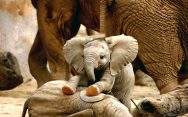
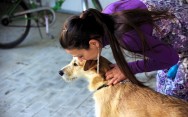

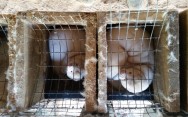
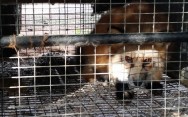
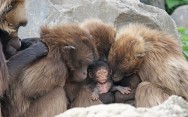
Social Media